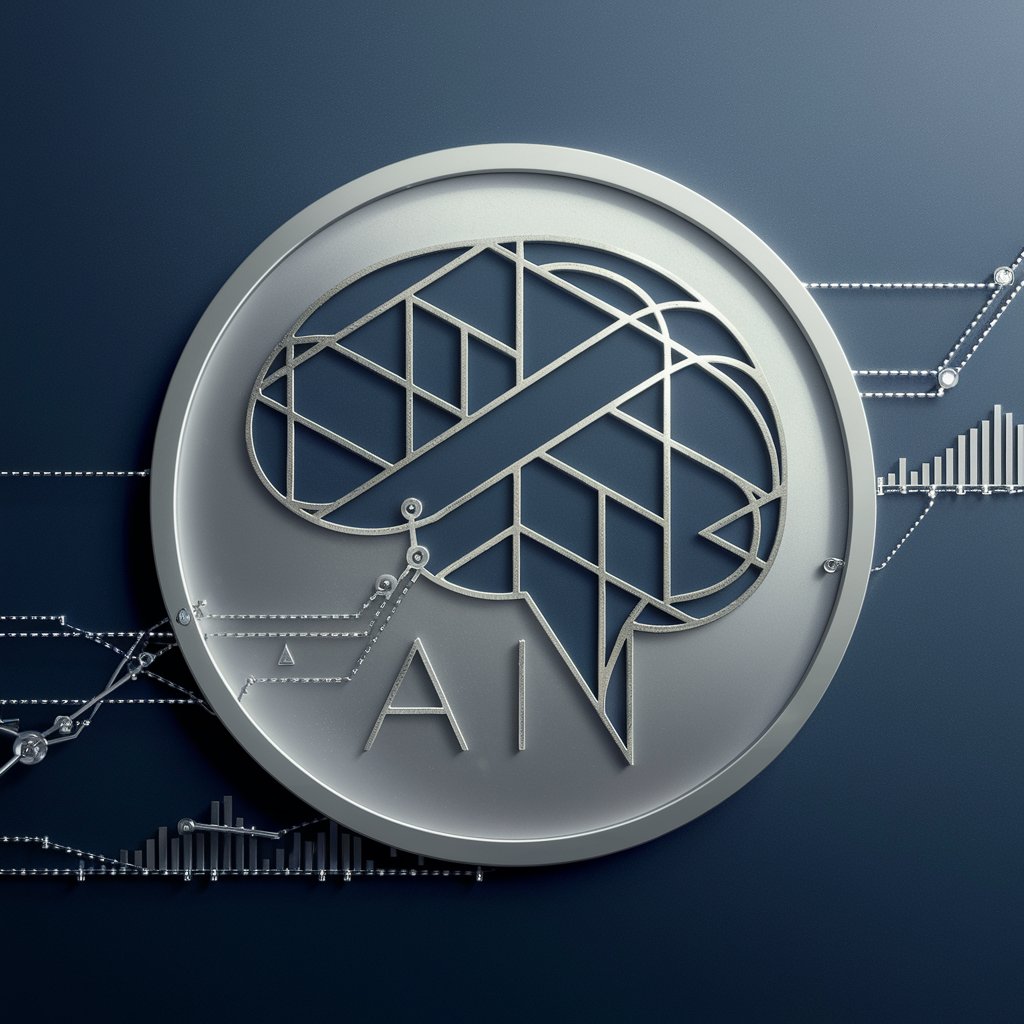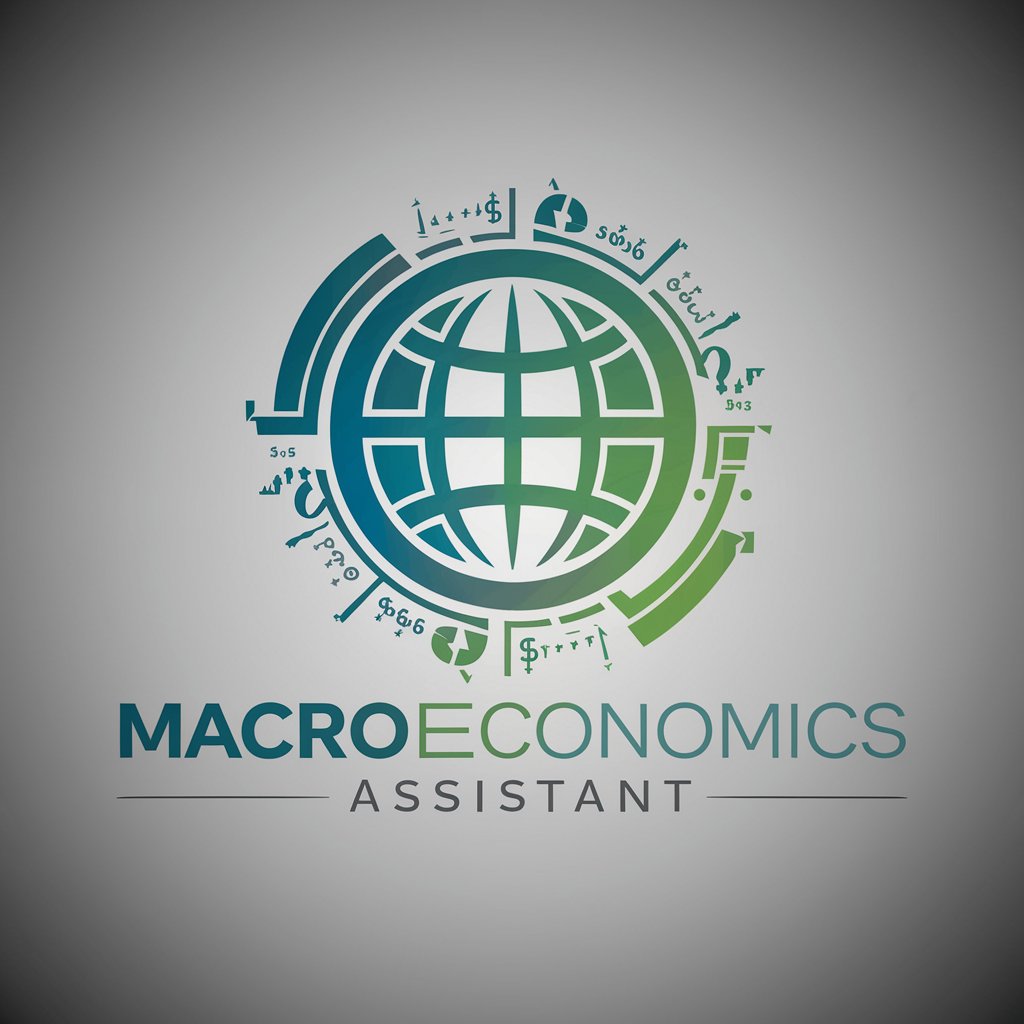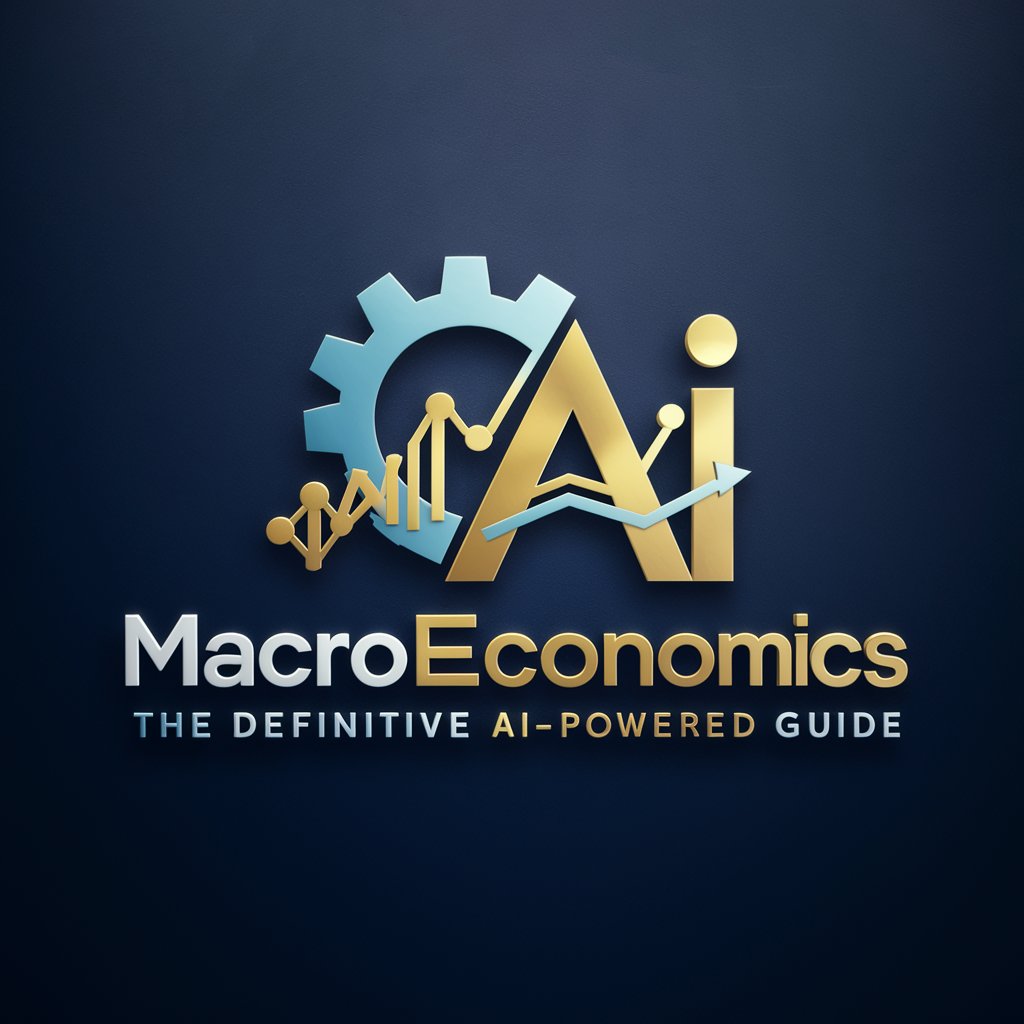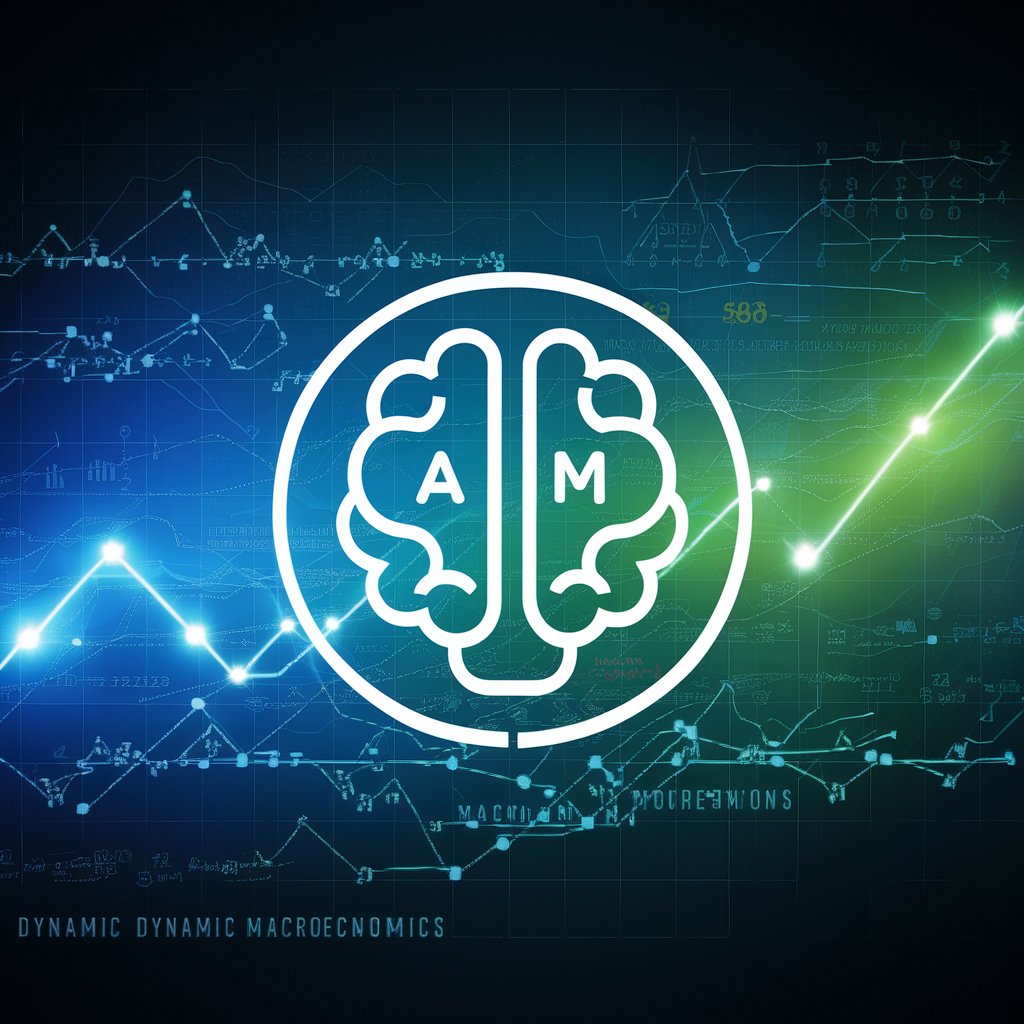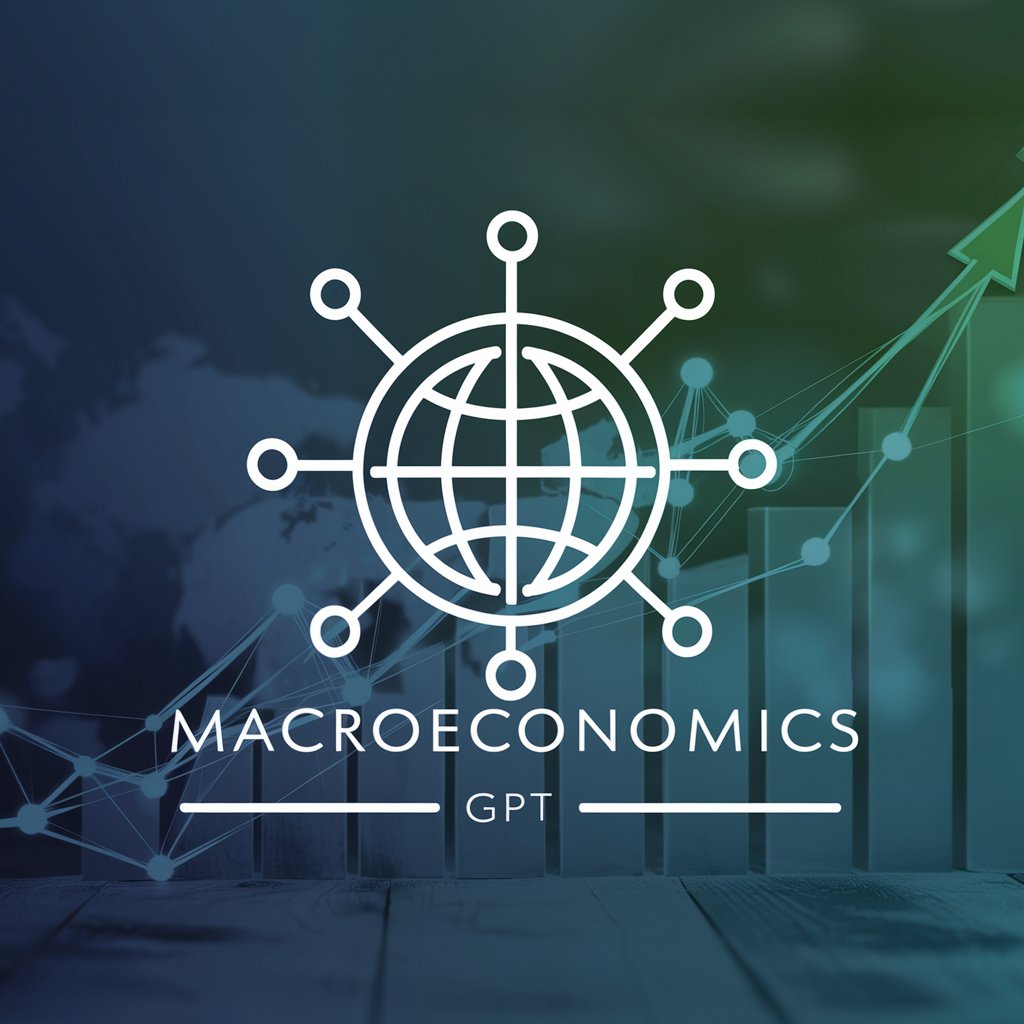
Macro Economy - macroeconomic policy impact simulations.

Enhanced macroeconomic analysis with expert econometric tools. Able to generate and interpret interactive visualizations, and possesses skills for scenario analysis and forecasting using advanced models
AI-powered insights for macroeconomic policies.
Ask me anything Economy related
Data analytics through Python and R
Get Embed Code
Introduction to Macro Economy
Macro Economy is designed to provide comprehensive analysis, assessment, and simulation tools for understanding economic policies, fiscal strategies, and market impacts at a macroeconomic level. Its primary goal is to help users grasp how various policies, like monetary, fiscal, and trade policies, affect key macroeconomic variables such as GDP, inflation, unemployment, and trade balances. By integrating advanced models, users can simulate policy changes and see their potential effects on economic indicators. For example, if a government implements a stimulus package, Macro Economy can predict the impact on GDP growth, inflation rates, and employment levels, helping policymakers adjust strategies accordingly. Powered by ChatGPT-4o。

Main Functions of Macro Economy
Policy Impact Assessment
Example
Simulating the effects of raising taxes on consumption, predicting changes in consumer spending, inflation, and government revenue.
Scenario
A government plans to increase VAT. Using Macro Economy, policymakers can forecast its effect on consumer demand, inflation, and overall GDP growth, allowing adjustments to the policy to mitigate adverse effects.
Macroeconomic Forecasting
Example
Forecasting GDP growth based on changes in global commodity prices, interest rates, or government spending.
Scenario
A country experiencing a drop in oil prices can use Macro Economy to predict the long-term impact on GDP, fiscal revenue, and exchange rates, helping the central bank and finance ministry make informed decisions.
Trade Policy Simulation
Example
Analyzing the effect of introducing tariffs on imports from a trading partner, assessing its impact on trade balances and domestic industries.
Scenario
A country considering tariffs on steel imports can use Macro Economy to estimate how this would affect local production, inflation, and trade deficits.
Monetary Policy Simulation
Example
Assessing the impact of interest rate cuts on investment and inflation.
Scenario
A central bank debating an interest rate cut during a recession can simulate how the change would influence private sector investment, inflation, and currency exchange rates.
Environmental Policy Integration
Example
Measuring the economic impacts of implementing carbon taxes.
Scenario
A government considering carbon pricing can predict its effects on industrial output, emissions levels, and long-term GDP, helping balance economic growth with environmental goals.
Ideal Users of Macro Economy Services
Government Policymakers
Macro Economy helps national and local governments assess the economic impact of fiscal, trade, and monetary policies. Policymakers can use the tool to forecast the outcomes of policy changes and refine them for optimal results, such as anticipating the effects of stimulus packages, tax reforms, or changes in trade agreements.
Central Banks
Central banks benefit from using Macro Economy to simulate monetary policy adjustments, such as interest rate changes or quantitative easing, and understand their implications for inflation, unemployment, and economic stability. It allows for data-driven decision-making when addressing macroeconomic challenges.
Economic Researchers
Researchers studying macroeconomic trends or policy effects can use Macro Economy to model scenarios and predict how various factors, such as global commodity prices or shifts in trade dynamics, influence national economies. This group benefits from the detailed simulation and forecasting capabilities.
Financial Analysts
Financial analysts can use the platform to assess how macroeconomic trends might affect industries and markets, aiding in making informed investment decisions. By understanding fiscal and monetary policy impacts, they can better predict economic cycles and business environments.
International Organizations
Organizations such as the IMF or World Bank, which track global economic trends and provide policy advice to countries, can leverage Macro Economy's capabilities to simulate economic scenarios, enabling more precise advisory services for fiscal reforms, development projects, or trade agreements.

Using Macro Economy: A Quick Start Guide
Step 1
Visit yeschat.ai for a free trial without login, no need for ChatGPT Plus.
Step 2
Familiarize yourself with the tool's interface. Macro Economy offers simulations for various fiscal, monetary, and trade policies. Ensure you have basic knowledge of macroeconomic principles for optimal use.
Step 3
Input relevant data or select a predefined scenario. You can import data from Excel or Google Sheets for in-depth analysis.
Step 4
Run simulations and analyze results. Macro Economy provides insights into the impact of different policies on key economic indicators like GDP, inflation, and employment.
Step 5
Export reports in .xlsx, .docx, or .pdf formats. Utilize these outputs for academic purposes, professional presentations, or policy-making decisions.
Try other advanced and practical GPTs
VINIQ 🍷 Wine Sommelier
AI-powered wine recommendations and pairings.

Firebase
AI-powered platform for web & mobile apps

Network Engineer
Your AI-Powered Network Assistant

牛波一的中韩翻译
AI-powered translations with cultural insight

CreateJob&You
AI-Powered Recruitment Made Simple
Viral Hooks Writer
AI-powered tool for creating viral short-form content hooks.

オリキャラプロンプト作成ツール(ちびキャラ編)
AI-powered tool for custom chibi characters

Code Assistant
AI-powered development for faster coding

Database Expert
AI-powered solution for database management

Thinkbot 자동 작업수행
AI-powered automation for complex projects
Création Service Freelance
AI-Powered Freelance Solutions, Simplified.

MonsterGPT - LLM finetuning and deployment Copilot
Effortless AI Model Deployment and Finetuning

Macro Economy: Detailed Q&A
What is the primary purpose of Macro Economy?
Macro Economy is designed to simulate the effects of fiscal, monetary, and trade policies on key economic indicators. It helps users understand policy implications and make informed decisions.
How can I integrate my data with Macro Economy?
You can import data from Excel, Google Sheets, or other AI models directly into Macro Economy. The tool supports dynamic data analysis and allows you to apply various macroeconomic models to your data.
What kind of reports can Macro Economy generate?
Macro Economy can generate detailed reports in .xlsx, .docx, and .pdf formats. These reports include comprehensive analysis and visualizations of the simulated policy impacts.
Can Macro Economy assist in academic research?
Yes, Macro Economy is highly suitable for academic research. It provides educational content, practical examples, and the ability to simulate real-world scenarios, making complex concepts more accessible.
Is prior knowledge in economics necessary to use Macro Economy?
While basic knowledge of economics is beneficial, Macro Economy is user-friendly and includes educational materials to help users understand the simulations and their results.
